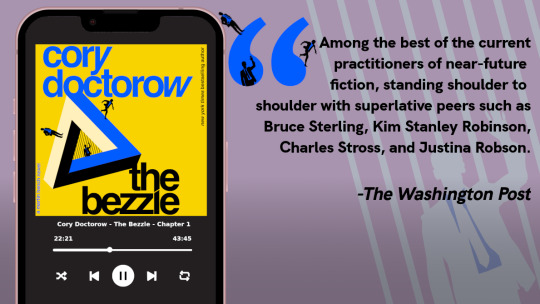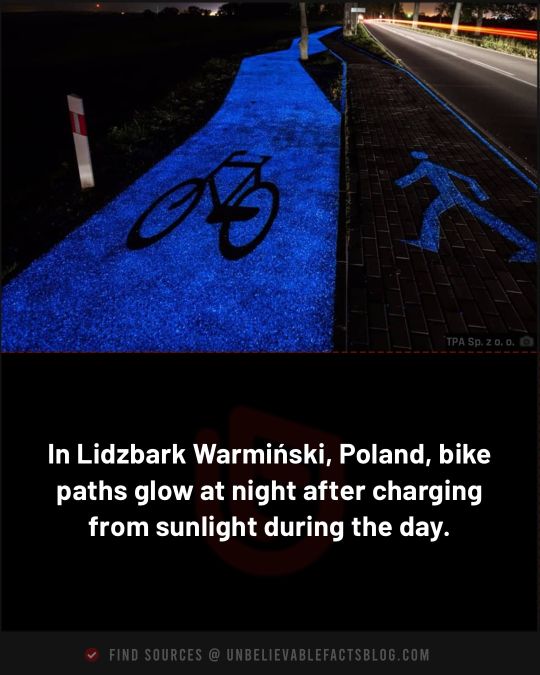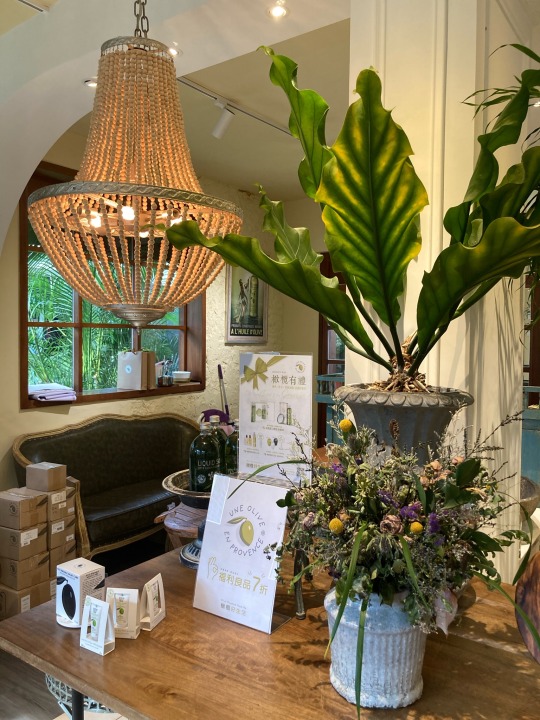#Innovation Technology
Explore tagged Tumblr posts
Text
Top AI Companies Leading the Charge in 2024: Innovations Shaping the Future
The blog "Top AI Companies Leading the Charge in 2024: Innovations Shaping the Future" highlights key players revolutionizing the AI landscape. It delves into groundbreaking innovations, transformative applications, and the impact of AI across industries. Discover how these companies are driving technological advancements, setting trends, and shaping a smarter, more connected future. A must-read for tech enthusiasts and businesses eyeing AI-driven growth.
0 notes
Text
The world of technology is growing constantly. What was formerly popular and in high demand may need to be quickly updated. This is a fact, especially in the case of big data. Browse @ [https://teksun.com/](https://teksun.com/).
#Technology Evolution#Dynamic Tech Landscape#Big Data Trends#Tech Updates#Innovation Technology#High Demand Technologies#Tech Industry Dynamics#Big Data Solutions#Cutting-edge Technology#Data Analytics Evolution
0 notes
Text
ABACUSYNTH by ELIAS JARZOMBEK [2022]
Abacusynth is a synthesizer inspired by an abacus, the ancient counting tool used all around the world. Just like an abacus is used to learn the fundamentals of math, the Abacusynth can be used to explore the building blocks of audio synthesis.
#elias jarzombek#abacusynth#technology#instruments#synthesizer#innovation#abacus#contemporary art#music#video#u
11K notes
·
View notes
Video
youtube
Do not fear the rain, it's only here to help you grow
#youtube#conscientious#put it together#be supportive#grow together#support local business#self reliance#earn your success#work diligently#provide great services#innovation technology#quality first#integrity matters#rainy day#harvest happiness#pursuit of excellence
0 notes
Text
How lock-in hurts design

Berliners: Otherland has added a second date (Jan 28) for my book-talk after the first one sold out -���book now!

If you've ever read about design, you've probably encountered the idea of "paving the desire path." A "desire path" is an erosion path created by people departing from the official walkway and taking their own route. The story goes that smart campus planners don't fight the desire paths laid down by students; they pave them, formalizing the route that their constituents have voted for with their feet.
Desire paths aren't always great (Wikipedia notes that "desire paths sometimes cut through sensitive habitats and exclusion zones, threatening wildlife and park security"), but in the context of design, a desire path is a way that users communicate with designers, creating a feedback loop between those two groups. The designers make a product, the users use it in ways that surprise the designer, and the designer integrates all that into a new revision of the product.
This method is widely heralded as a means of "co-innovating" between users and companies. Designers who practice the method are lauded for their humility, their willingness to learn from their users. Tech history is strewn with examples of successful paved desire-paths.
Take John Deere. While today the company is notorious for its war on its customers (via its opposition to right to repair), Deere was once a leader in co-innovation, dispatching roving field engineers to visit farms and learn how farmers had modified their tractors. The best of these modifications would then be worked into the next round of tractor designs, in a virtuous cycle:
https://securityledger.com/2019/03/opinion-my-grandfathers-john-deere-would-support-our-right-to-repair/
But this pattern is even more pronounced in the digital world, because it's much easier to update a digital service than it is to update all the tractors in the field, especially if that service is cloud-based, meaning you can modify the back-end everyone is instantly updated. The most celebrated example of this co-creation is Twitter, whose users created a host of its core features.
Retweets, for example, were a user creation. Users who saw something they liked on the service would type "RT" and paste the text and the link into a new tweet composition window. Same for quote-tweets: users copied the URL for a tweet and pasted it in below their own commentary. Twitter designers observed this user innovation and formalized it, turning it into part of Twitter's core feature-set.
Companies are obsessed with discovering digital desire paths. They pay fortunes for analytics software to produce maps of how their users interact with their services, run focus groups, even embed sneaky screen-recording software into their web-pages:
https://www.wired.com/story/the-dark-side-of-replay-sessions-that-record-your-every-move-online/
This relentless surveillance of users is pursued in the name of making things better for them: let us spy on you and we'll figure out where your pain-points and friction are coming from, and remove those. We all win!
But this impulse is a world apart from the humility and respect implied by co-innovation. The constant, nonconsensual observation of users has more to do with controlling users than learning from them.
That is, after all, the ethos of modern technology: the more control a company can exert over its users ,the more value it can transfer from those users to its shareholders. That's the key to enshittification, the ubiquitous platform decay that has degraded virtually all the technology we use, making it worse every day:
https://pluralistic.net/2023/02/19/twiddler/
When you are seeking to control users, the desire paths they create are all too frequently a means to wrestling control back from you. Take advertising: every time a service makes its ads more obnoxious and invasive, it creates an incentive for its users to search for "how do I install an ad-blocker":
https://www.eff.org/deeplinks/2019/07/adblocking-how-about-nah
More than half of all web-users have installed ad-blockers. It's the largest consumer boycott in human history:
https://doc.searls.com/2023/11/11/how-is-the-worlds-biggest-boycott-doing/
But zero app users have installed ad-blockers, because reverse-engineering an app requires that you bypass its encryption, triggering liability under Section 1201 of the Digital Millennium Copyright Act. This law provides for a $500,000 fine and a 5-year prison sentence for "circumvention" of access controls:
https://pluralistic.net/2024/01/12/youre-holding-it-wrong/#if-dishwashers-were-iphones
Beyond that, modifying an app creates liability under copyright, trademark, patent, trade secrets, noncompete, nondisclosure and so on. It's what Jay Freeman calls "felony contempt of business model":
https://locusmag.com/2020/09/cory-doctorow-ip/
This is why services are so horny to drive you to install their app rather using their websites: they are trying to get you to do something that, given your druthers, you would prefer not to do. They want to force you to exit through the gift shop, you want to carve a desire path straight to the parking lot. Apps let them mobilize the law to literally criminalize those desire paths.
An app is just a web-page wrapped in enough IP to make it a felony to block ads in it (or do anything else that wrestles value back from a company). Apps are web-pages where everything not forbidden is mandatory.
Seen in this light, an app is a way to wage war on desire paths, to abandon the cooperative model for co-innovation in favor of the adversarial model of user control and extraction.
Corporate apologists like to claim that the proliferation of apps proves that users like them. Neoliberal economists love the idea that business as usual represents a "revealed preference." This is an intellectually unserious tautology: "you do this, so you must like it":
https://boingboing.net/2024/01/22/hp-ceo-says-customers-are-a-bad-investment-unless-they-can-be-made-to-buy-companys-drm-ink-cartridges.html
Calling an action where no alternatives are permissible a "preference" or a "choice" is a cheap trick – especially when considered against the "preferences" that reveal themselves when a real choice is possible. Take commercial surveillance: when Apple gave Ios users a choice about being spied on – a one-click opt of of app-based surveillance – 96% of users choice no spying:
https://arstechnica.com/gadgets/2021/05/96-of-us-users-opt-out-of-app-tracking-in-ios-14-5-analytics-find/
But then Apple started spying on those very same users that had opted out of spying by Facebook and other Apple competitors:
https://pluralistic.net/2022/11/14/luxury-surveillance/#liar-liar
Neoclassical economists aren't just obsessed with revealed preferences – they also love to bandy about the idea of "moral hazard": economic arrangements that tempt people to be dishonest. This is typically applied to the public ("consumers" in the contemptuous parlance of econospeak). But apps are pure moral hazard – for corporations. The ability to prohibit desire paths – and literally imprison rivals who help your users thwart those prohibitions – is too tempting for companies to resist.
The fact that the majority of web users block ads reveals a strong preference for not being spied on ("users just want relevant ads" is such an obvious lie that doesn't merit any serious discussion):
https://www.iccl.ie/news/82-of-the-irish-public-wants-big-techs-toxic-algorithms-switched-off/
Giant companies attained their scale by learning from their users, not by thwarting them. The person using technology always knows something about what they need to do and how they want to do it that the designers can never anticipate. This is especially true of people who are unlike those designers – people who live on the other side of the world, or the other side of the economic divide, or whose bodies don't work the way that the designers' bodies do:
https://pluralistic.net/2022/10/20/benevolent-dictators/#felony-contempt-of-business-model
Apps – and other technologies that are locked down so their users can be locked in – are the height of technological arrogance. They embody a belief that users are to be told, not heard. If a user wants to do something that the designer didn't anticipate, that's the user's fault:
https://www.wired.com/2010/06/iphone-4-holding-it-wrong/
Corporate enthusiasm for prohibiting you from reconfiguring the tools you use to suit your needs is a declaration of the end of history. "Sure," John Deere execs say, "we once learned from farmers by observing how they modified their tractors. But today's farmers are so much stupider and we are so much smarter that we have nothing to learn from them anymore."
Spying on your users to control them is a poor substitute asking your users their permission to learn from them. Without technological self-determination, preferences can't be revealed. Without the right to seize the means of computation, the desire paths never emerge, leaving designers in the dark about what users really want.
Our policymakers swear loyalty to "innovation" but when corporations ask for the right to decide who can innovate and how, they fall all over themselves to create laws that let companies punish users for the crime of contempt of business-model.

I'm Kickstarting the audiobook for The Bezzle, the sequel to Red Team Blues, narrated by @wilwheaton! You can pre-order the audiobook and ebook, DRM free, as well as the hardcover, signed or unsigned. There's also bundles with Red Team Blues in ebook, audio or paperback.

If you'd like an essay-formatted version of this post to read or share, here's a link to it on pluralistic.net, my surveillance-free, ad-free, tracker-free blog:
https://pluralistic.net/2024/01/24/everything-not-mandatory/#is-prohibited

Image: Belem (modified) https://commons.wikimedia.org/wiki/File:Desire_path_%2819811581366%29.jpg
CC BY 2.0 https://creativecommons.org/licenses/by/2.0/deed.en
#pluralistic#desire paths#design#drm#everything not mandatory is prohibited#apps#ip#innovation#user innovation#technological self-determination#john deere#twitter#felony contempt of business model
3K notes
·
View notes
Text
A thought I’ve been having: While it's important to recognize the long history of many current queer identities (and the even longer history of people who lived outside of the straight, cis, allo “norm”) I think it's also important to remember that a label or identity doesn't have to be old to be, for lack of a better word, real.
This post that i reblogged a little while ago about asexuality and its history in the LGBTQ+ rights movement and before is really good and really important. As i've thought about it more, though, it makes me wonder why we need to prove that our labels have "always existed." In the case of asexuality, that post is pushing back against exclusionists who say that asexuality was “made up on the internet” and is therefore invalid. The post proves that untrue, which is important, because it takes away a tool for exclusionists.
But aromanticism, a label & community with a lot of overlap & solidarity with asexuality, was not a label that existed during Stonewall and the subsequent movement. It was coined a couple decades ago, on internet forums. While the phrasing is dismissive, it would be technically accurate to say that it was “made up on the internet.” To be very clear, I’m not agreeing with the exclusionists here—I’m aromantic myself. What I’m asking is, why does being a relatively recently coined label make it any less real or valid for people to identify with?
I think this emphasis on historical precedent is what leads to some of the attempts to label historical figures with modern terminology. If we can say someone who lived 100 or 1000 years ago was gay, or nonbinary, or asexual, or whatever, then that grants the identity legitimacy. but that's not the terminology they would have used then, and we have no way of knowing how, or if, any historical person's experiences would fit into modern terminology.
There's an element of "the map is not the territory" here, you know? Like this really good post says, labels are social technologies. There's a tendency in the modern Western queer community to act like in the last few decades the "truth" about how genders and orientations work has become more widespread and accepted. But that leaves out all the cultures, both historical and modern, that use a model of gender and sexuality that doesn't map neatly to LGBTQ+ identities but is nonetheless far more nuanced than "there are two genders, man and woman, and everyone is allo and straight." Those systems aren’t any more or less “true” than the system of gay/bi/pan/etc and straight, cis and trans, aro/ace and allo.
I guess what I’m saying is, and please bear with me here, “gay” people have not always existed. “Nonbinary” people have not always existed. “Asexual” people have not always existed. But people who fell in love with and had sex with others of the same gender have always existed. People who would not have identified themselves as either men or women have always existed. People who didn’t prioritize sex (and/or romance) as important parts of their lives have always existed. In the grand scheme of human existence, all our labels are new, and that’s okay. In another hundred or thousand years we’ll have completely different ways of thinking about gender and sexuality, and that’ll be okay too. Our labels can still be meaningful to us and our experiences right now, and that makes them real and important no matter how new they are.
We have a history, and we should not let it be erased. But we don’t need a history for our experiences and ways of describing ourselves to be real, right now.
#stars has thoughts#i'm not letting the exclusionists have this one#'it was coined on the internet' 'it was only coined a few (read: in the case of aromanticism almost 20) years ago' true. so what?#that doesn't make it less real#i hope what i'm getting at comes across here#(and that it doesn't sound like im trying to invalidate all LGBTQ+ labels lol. i'm trying so hard to not do that)#labels are social technologies. if they are useful here and now then they are useful#we are using technologies that are new and innovative and useful to us in this time and place#in other times and places they have not always been and will not always be useful#but that's true of any technology. doesn't mean we don't get to use them now#queer#aspec stuff#aro thoughts
424 notes
·
View notes
Text

In Lidzbark Warmiński, Poland, bike paths glow at night after charging from sunlight during the day.
314 notes
·
View notes
Text
Glass becomes invisible when dipped in oil
Because the beaker and the vegetable oil have the same refractive index value, which is 1.47.
The index of refraction is how much light bends and slows down as it passes through a medium. Don't forget to follow us.
541 notes
·
View notes
Text

Electrode Producers of Hungnam
Ri Jong Chol (J111/2022)
133 notes
·
View notes
Text
How IoT Brings Life-Saving Innovation in Dubai’s Healthcare Industry
Explore the groundbreaking advancements in Dubai's healthcare sector powered by IoT technology. Discover how Internet of Things solutions are revolutionizing patient care, optimizing hospital operations, and enabling remote monitoring for enhanced medical outcomes. Delve into real-world examples showcasing how IoT is driving life-saving innovation in Dubai's healthcare industry, improving accessibility, efficiency, and overall quality of care.
0 notes
Text

SOUND BURGER [AT770] PORTABLE TURNTABLE AUDIO-TECHNICA OF JAPAN, 1983 | + INT. 2022
#advertising#retro tech#vinyl records#japanese#80s#audio-technica#sound burger#turntable#innovation#vintage advertising#music#technology#u
86 notes
·
View notes
Text

148 notes
·
View notes
Text
The Outrider USA Coyote 4WD is an all-terrain electric mobility vehicle built for adventurers.
88 notes
·
View notes
Text
















【Part 3】 ◠‿◠ Women shopping ... terrible XD hahaha
「廣西桂林好聚落」: "若生靜巷 coffee shop" & "一顆橄欖"專賣店
若生靜巷咖啡 (@umarekawatta.coffee)地址:高雄市前鎮區桂林街58巷18號 時間:10:00~18:00、週一、週四公休 電話:(07)334-5685
一顆橄欖 UNE OLIVE EN PROVENCE (一顆橄欖好生活Uneolivetw) 地址:高雄市前鎮區桂林街58巷10號 時間:週二至週日9:00~17:00 電話:(07)331-6800
#chu lan#fine craft artist#朱蘭皮藝#leather art artist#beautiful life#to see ai innovation technology exhibition#kaohsiung#taiwan#高雄展覽館#2024 meet greater south 亞灣新創大南方展#創新科技xtree創新x亞灣5g alot#經濟部產業技術司#解密科技寶藏#my life my way#tea time with vivian#一顆橄欖好生活une olive en provence /taiwan
85 notes
·
View notes
Text
Postcanon alyx yayyy

She doesn't like the civilian clothes or what's left of the CP uniforms. Her hoodie and jacket are way better. And she's probably the last person on earth to own low rise jeans like this. Not that she doesn't have other clothes this is just objectively superior
#no reposting#i dont reaally have a lot to say about alyx here T_T#like very similar to Barney not much changes about her role?#shes still a mechanic n all that. still has a big hand in all the technological innovation within the resistance#uses her awesome hacking skills to repurpose combine tech#she isn't a sentry like Barney she just tags along for company#i have thoughts. about them.#anyways#half life 2#half life furry au#half life fanart#alyx vance
57 notes
·
View notes